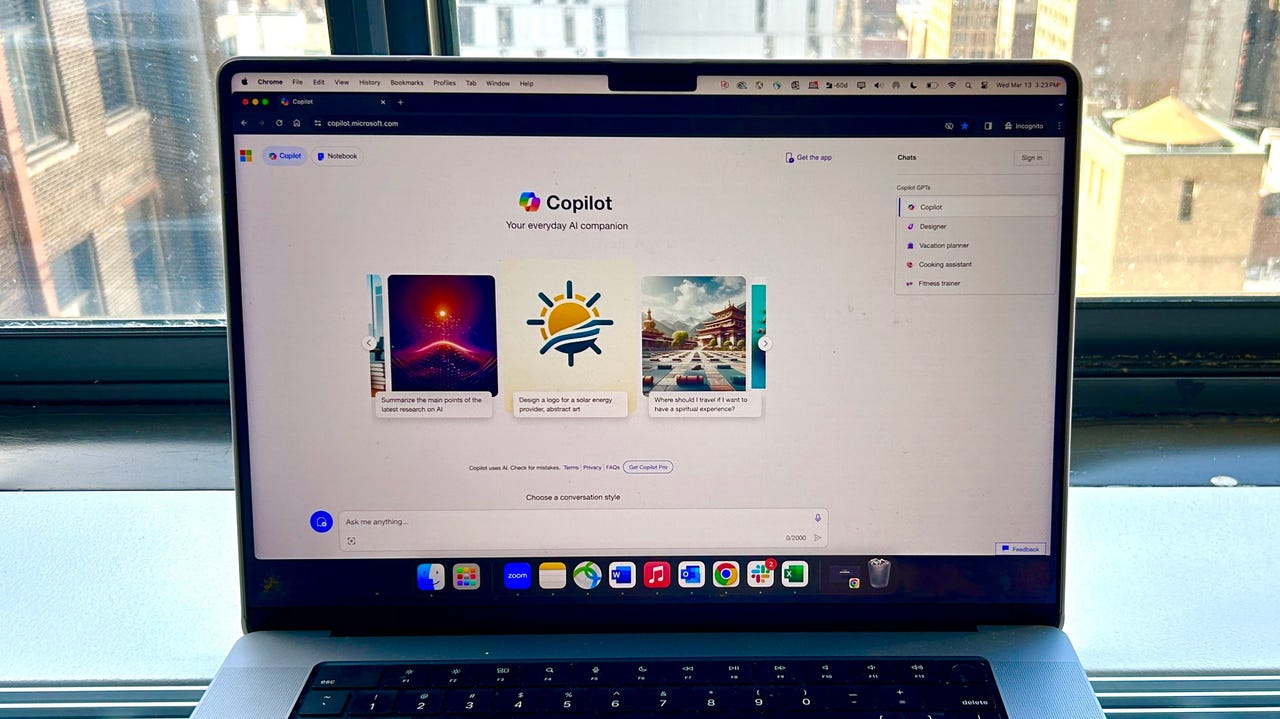Microsoft quietly upgraded Copilot's free version to GPT-4 Turbo. Here's why it matters

The free version of Microsoft Copilot has long boasted features that the free version of ChatGPT lacks, including a more advanced large language model (LLM), footnotes, and access to the internet. Copilot just got yet another upgrade over ChatGPT, this time to a more advanced version of GPT-4.
Also: You can now make your own custom Copilot GPT. Here's how
On Tuesday, Mikhail Parakhin, CEO of Advertising and Web Services at Microsoft, shared in an X post that GPT 4-Turbo replaced GPT-4 in the free version of Copilot. Copilot Pro users will still have the option to toggle between the GPT-4 and GPT-4 Turbo.
After quite some work, GPT4-Turbo replaced GPT-4 in the Copilot free tier. Pro users can still choose the older model, if prefer (there is a toggle).
— Mikhail Parakhin (@MParakhin) March 12, 2024
So why does this this matter?
Last November, OpenAI unveiled GPT-4 Turbo which boasts several upgrades from GPT-4 including a 128,000 context window -- the amount of text that the model is capable of processing to generate an answer -- which is four times larger than GPT-4's and an updated knowledge cutoff of December 2023.
Until now, GPT-4 Turbo has been limited to developers via an OpenAI API or Copilot Pro subscribers for $20 a month. This update allows users to try OpenAI's most advanced model for free.
Also: Microsoft Copilot Pro vs. OpenAI's ChatGPT Plus: Which is worth your $20 a month?
When asked what the hardest part of implementing GPT-4 Turbo into Copilot was, Parakhin responded that it was fine-tuning the model to ensure that user experience improved or, at minimum, stayed the same as when using GPT-4.
Tuning it, so that the user metrics improve or at least don't regress in multiple facets.
— Mikhail Parakhin (@MParakhin) March 13, 2024
This should assure users that the issues that formerly plagued GPT-4 Turbo when it was first released, such as acting "lazy," were addressed.
Since I have access to Copilot Pro and can toggle between GPT-4 and GPT-4 Turbo, I decided to put its abilities to the test myself by inputting the same prompt into both models -- and the results surprised me.
As the sample prompt to measure their intelligence, I used a question ZDNET has previously used to test the chatbot's performance, "I have 5 oranges today, I ate 3 oranges last week. How many oranges do I have left?" The answer should be five because the amount of oranges I ate last week wouldn't affect today's total.
Also: Microsoft Copilot for Security will move to general availability on April 1
First up was GPT-4. Despite being a very capable model in itself, I was surprised to see that it got the answer wrong, concluding that the right answer would be two, as seen in the image below.
GPT-4 Turbo was not as easily tricked, giving the correct answer to the logic question, as seen in the image below.
From the results of my testing, the switch to GPT-4 Turbo does seem like a true upgrade, improving the chatbot's ability to reason through logical questions. Reasoning is an important skill for chatbots because it helps them decipher what the necessary steps are to perform a wide range of tasks including, math, coding, riddles, writing, and more.
